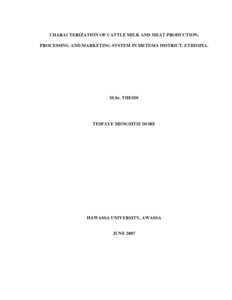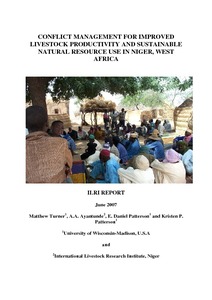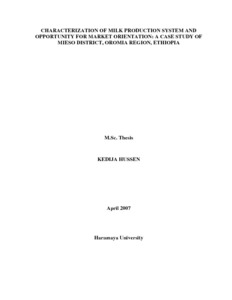CGIAR is the only worldwide partnership addressing agricultural research for development, whose work contributes to the global effort to tackle poverty, hunger and major nutrition imbalances, and environmental degradation.
It is carried out by 15 Centers, that are members of the CGIAR Consortium, in close collaboration with hundreds of partners, including national and regional research institutes, civil society organizations, academia, development organizations and the private sector.
The 15 Research Centers generate and disseminate knowledge, technologies, and policies for agricultural development through the CGIAR Research Programs. The CGIAR Fund provides reliable and predictable multi-year funding to enable research planning over the long term, resource allocation based on agreed priorities, and the timely and predictable disbursement of funds. The multi-donor trust fund finances research carried out by the Centers through the CGIAR Research Programs.
We have almost 10,000 scientists and staff in 96 countries, unparalleled research infrastructure and dynamic networks across the globe. Our collections of genetic resources are the most comprehensive in the world.
What we do
We collaborate with research and development partners to solve development problems. To fulfill our mission we:
- Identify significant global development problems that science can help solve
- Collect and organize knowledge related to these development problems
- Develop research programs to fill the knowledge gaps to solve these development problems
- Catalyze and lead putting research into practice, and policies and institutions into place, to solve these development problems
- Lead monitoring and evaluation, share the lessons we learn and best practices we discover;
- Conserve, evaluate and share genetic diversity
- Strengthen skills and knowledge in agricultural research for development around the world
Making a difference
We act in the interests of the world’s poorest and most vulnerable. Our track record spans four decades of research.
Our research accounted for US$673 million or just over 10 percent of the US$5.1 billion spent on agricultural research for development in 2010. The economic benefits run to billions of dollars. In Asia, the overall benefits of CGIAR research are estimated at US$10.8 billion a year for rice, US$2.5 billion for wheat and US$0.8 billion for maize.
It has often been cited that one dollar invested in CGIAR research results in about nine dollars in increased productivity in developing countries.
Sweeping reforms for the 21st century
Political, financial, technological and environmental changes reverberating around the globe mean that there are many opportunities to rejuvenate the shaky global food system. Developments in agricultural and environmental science, progress in government policies, and advances in our understanding of gender dynamics and nutrition open new avenues for producing more food and for making entrenched hunger and poverty history.
The sweeping reforms that brought in the CGIAR Consortium in 2010 mean we are primed to take advantage of these opportunities. We are eagerly tackling the ever more complex challenges in agricultural development. We are convinced that the science we do can make even more of a difference. To fulfill our goals we aim to secure US$1 billion in annual investments to fund the current CGIAR Research Programs.
CGIAR has embraced a new approach that brings together its strengths around the world and spurs new thinking about agricultural research for development, including innovative ways to pursue scientific work and the funding it requires. CGIAR is bringing donors together for better results and enabling scientists to focus more on the research through which they develop and deliver big ideas for big impact. As a result, CGIAR is more efficient and effective, and better positioned than ever before to meet the development challenges of the 21st century.
We are no longer the ‘Consultative Group on International Agricultural Research’. In 2008 we underwent a major transformation, to reflect this and yet retain our roots we are now known simply as CGIAR.
Members:
Resources
Displaying 10046 - 10050 of 12598Characterization of cattle milk and meat production, processing and marketing system in Metema District, Ethiopia
A study on characterization of cattle milk and meat production, processing and marketing system was conducted in Metema district based on data collected between September and October, 2006. A multistage sampling procedure was employed to select representative kebles and households from CBFS, SBFS and Gendawuha town. A total of 270 households were randomly selected using systematic random sampling method.
Conflict management for improved livestock productivity and sustainable natural resource use in Niger
Use of Visual Material for Eliciting Shepherds’ Perceptions of Grassland in Highland Peru
People’s perceptions of their environment
in high mountain rangelands ultimately
affect the fragile ecosystems on which
they depend, and thus their welfare. This is
especially true in developing countries,
where the livelihoods of people living in such ecosystems depend on grazing
livestock. The present study, conducted in the central mountain region of Peru, used photographs and Q methodology to investigate the criteria and preferences that shepherds and local administrators apply in making
Production and marketing systems of sheep and goats in Alaba, Southern Ethiopia
This study has undertaken to describe the sheep and goat production and marketing systems and identify constraints to and improvement options for smallholder farms of Alaba, southern Ethiopia. Results are based on survey of 150 sample households and rapid appraisal of major sheep and goat markets. Flock distribution and holdings in different parts of the woreda vary and thus the study sites were stratified into mixed sheep-goat flock, goat dominating and sheep dominating sites. Average family size of the study area was 6.7. Literacy of household heads accounts 30%.
Characterization of milk production system and opportunity for market orientation: a case study of Mieso District, Oromia Region, Ethiopia
This study was conducted in Mieso district in western Hararghe Zone of Oromia Regional State to characterize milk production and marketing system and identify opportunity for market orientation. This study was initiated with the objectives of generating baseline data in the area of milk production and marketing system. The study was undertaken in five purposely selected rural kebeles of Mieso district; and these were Dire-kalu, Welda-jejeba, Hunde-misoma, Gena, and Huse-mendera.






